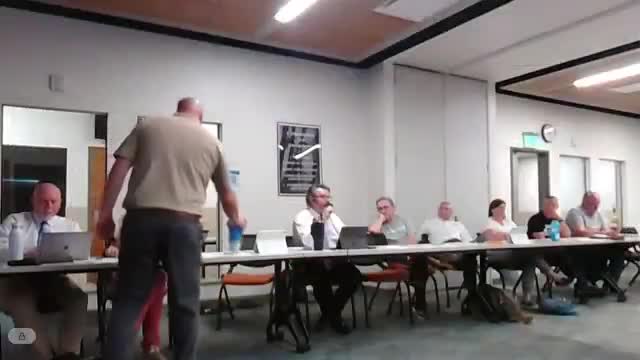Utah school district plans 20-year strategy to raise property taxes for funding
June 03, 2025 | Box Elder School District , Utah School Boards, Utah
This article was created by AI summarizing key points discussed. AI makes mistakes, so for full details and context, please refer to the video of the full meeting. Please report any errors so we can fix them. Report an error »

The Box Elder School District Board meeting on June 2, 2025, highlighted significant discussions regarding the district's financial strategies for accommodating its growing student population. With approximately 12,000 students, the district faces unique challenges in funding and infrastructure development compared to other districts in Utah.
A key focus of the meeting was the necessity of leveraging financial resources to support the construction of new schools and facilities. Board members discussed the importance of borrowing through general obligation bonds or utilizing revenue from tax levies to finance these projects. The district's leadership emphasized the need for a long-term financial plan, projecting a 20-year strategy to manage growth and infrastructure needs effectively.
The board acknowledged that Box Elder is the largest school district in the state by land area, yet it struggles with lower tax revenues compared to districts with similar or smaller student populations. This discrepancy necessitates a careful approach to raising property taxes incrementally to fund essential projects without overwhelming the community.
The discussion also touched on the current state of construction costs, with estimates for new school buildings fluctuating due to market conditions. Board members noted that while current borrowing rates are higher than in previous months, they are expected to decrease later in the year, presenting a potential opportunity for the district to secure more favorable financing terms.
In addition to financial strategies, the board addressed the importance of community engagement and transparency in the decision-making process. They acknowledged previous challenges in gaining public support for tax increases and expressed a commitment to communicating the necessity of these measures to residents.
As the district prepares for future growth, the board's discussions reflect a proactive approach to ensuring that Box Elder School District can meet the educational needs of its students while maintaining fiscal responsibility. The next steps will involve refining the financial plan and continuing to engage with the community to build support for upcoming initiatives.
A key focus of the meeting was the necessity of leveraging financial resources to support the construction of new schools and facilities. Board members discussed the importance of borrowing through general obligation bonds or utilizing revenue from tax levies to finance these projects. The district's leadership emphasized the need for a long-term financial plan, projecting a 20-year strategy to manage growth and infrastructure needs effectively.
The board acknowledged that Box Elder is the largest school district in the state by land area, yet it struggles with lower tax revenues compared to districts with similar or smaller student populations. This discrepancy necessitates a careful approach to raising property taxes incrementally to fund essential projects without overwhelming the community.
The discussion also touched on the current state of construction costs, with estimates for new school buildings fluctuating due to market conditions. Board members noted that while current borrowing rates are higher than in previous months, they are expected to decrease later in the year, presenting a potential opportunity for the district to secure more favorable financing terms.
In addition to financial strategies, the board addressed the importance of community engagement and transparency in the decision-making process. They acknowledged previous challenges in gaining public support for tax increases and expressed a commitment to communicating the necessity of these measures to residents.
As the district prepares for future growth, the board's discussions reflect a proactive approach to ensuring that Box Elder School District can meet the educational needs of its students while maintaining fiscal responsibility. The next steps will involve refining the financial plan and continuing to engage with the community to build support for upcoming initiatives.
View full meeting
This article is based on a recent meeting—watch the full video and explore the complete transcript for deeper insights into the discussion.
View full meeting

